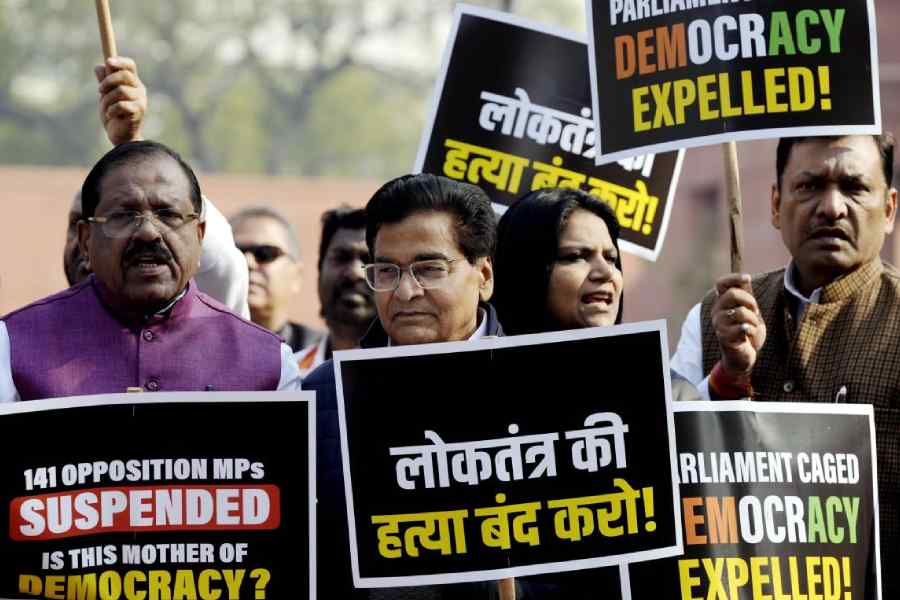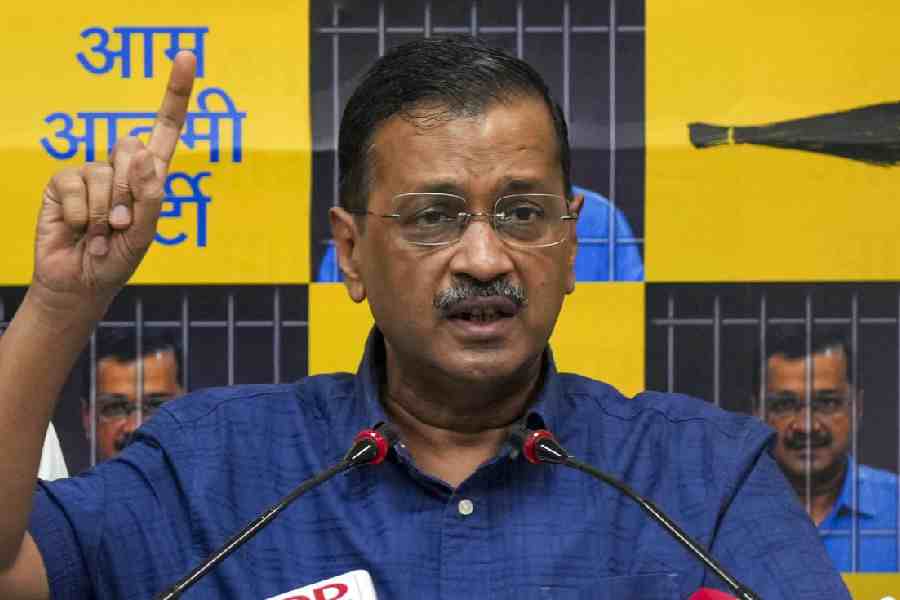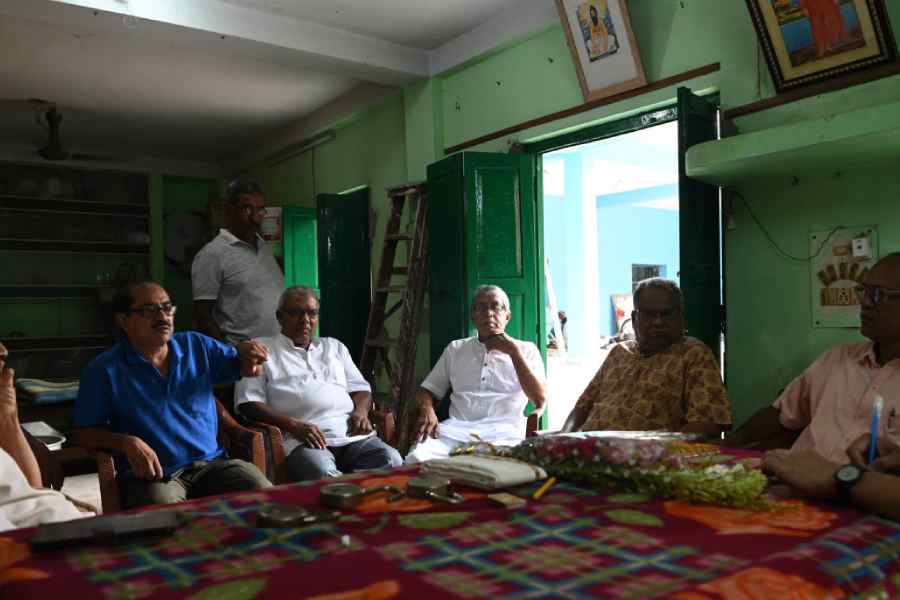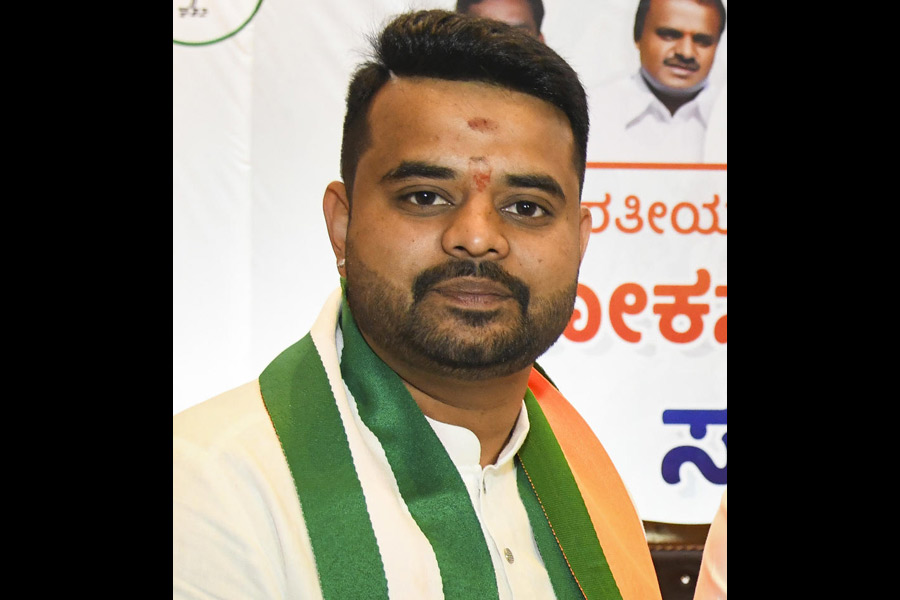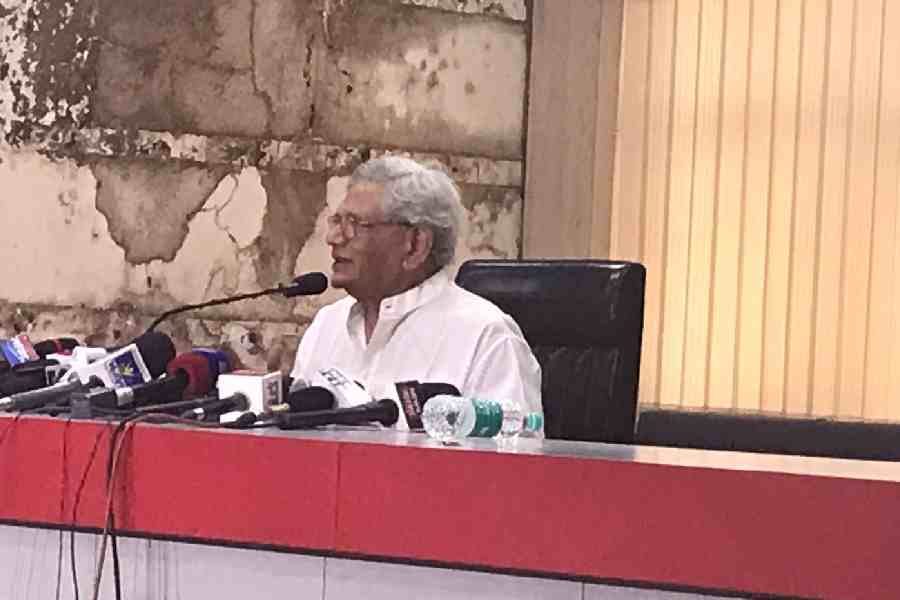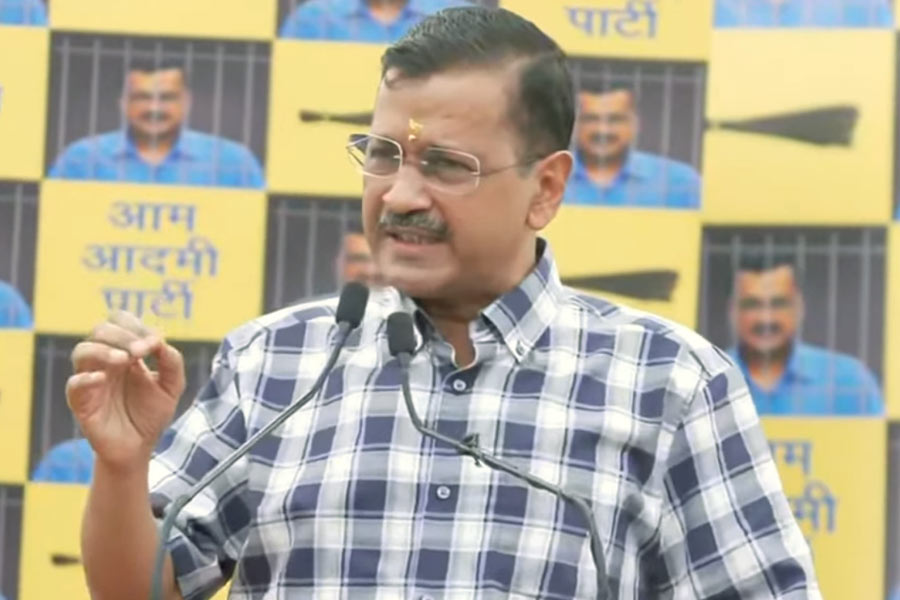The YouTube commentator who equated this week’s goings-on in Parliament with the final day in school of a graduating class in a boisterous boy’s school wasn’t terribly off the mark. With only the ritual of the vote-on-account in February next year left before the 17th Lok Sabha is formally dissolved, the Opposition was in desperate need of some issue that would allow it to complete a dismal five years on a high. It is in this context that the smoke bombs of the tinpot Bhagat Singhs came in very handy.
The agenda having been set, first, by the ruling Bharatiya Janata Party’s emphatic victories in Rajasthan, Madhya Pradesh, and Chhattisgarh, and, subsequently, by the Supreme Court verdict on the legality of the abolition of Article 370 by Parliament in August 2019, the beleaguered Opposition needed something that would allow it to depart for next year’s electoral battle with its honour intact. For the Opposition, the pressing issue wasn’t the security arrangements in Parliament since the final responsibility for the arrangement was with the Speaker’s office and not the home ministry. What mattered to the constituents of the makeshift INDIA coalition was that the BJP was denied an opportunity to crow about its triumphant Hindu march, at least in Parliament.
The Opposition was only too aware that the BJP celebrations over its election victories and the completion of its Mission Kashmir was just the dress rehearsal for the grand spectacle on January 22, next year, when the prime minister would undertake the pran pratishtha of Lord Ram in the grand temple in Ayodhya. The BJP believes that the completion of the Ram temple — an issue that had dominated the national agenda since 1989 — would galvanise the national mood and set the stage for Narendra Modi’s third consecutive term as prime minister. The shenanigans in Parliament were the Opposition’s feeble attempt to throw a spanner in the works, an exercise that was facilitated by the BJP’s determination to not concede even an inch of political space to its opponents.
Since political choreography is always prone to unexpected human glitches, it is impossible to anticipate how the electorate will respond to the competing schemes of the BJP and the INDIA coalition. However, from the way events have panned out since counting day on December 3, one thing is sufficiently clear: the Opposition is in no mood to debate the BJP’s bid to overwhelm the country with its so-called Hindu agenda. There are suggestions that the Congress leader, Rahul Gandhi, will try to upstage the Ram temple inauguration in Ayodhya with another round of his Bharat Jodo Yatra, this time focussing exclusively on the Modi government’s supposed failure to address the issues of price rise and youth unemployment. Since Modi has put forward the dream of Viksit Bharat (Developed India) as the national goal for the next 25 years, the Congress believes that a campaign centred on the country’s immediate economic shortcomings will stump the prime minister’s marketing of a dream. The Congress endeavour will be to puncture Viksit Bharat in the same way as it did India Shining two decades ago.
The conscious decision of the Opposition and, particularly, the Congress to bypass any debate on the BJP’s so-called ‘majoritarian’ agenda is worth examining. While feisty denunciations of Hindutva, particularly its religio-cultural expressions, has been a feature of secular activism in the campuses, there now appears to be a conscious decision to avoid its public dissection. To some extent, this appears to be a consequence of the spirited criticism by intellectuals associated with the Congress ecosystem of the folly behind the ‘soft Hindutva’ approach of the party leadership in central and western India. In the wake of the December 3 outcome, it was argued that the Congress made a fool of itself trying to replicate the BJP’s cultural nationalism. When the real product was available in the market, so it was argued by angry Congress loyalists, why should people settle for carbon copies?
Much water has flown down the Ganga in the past few decades. The terms of the ideological debate have changed unrecognisably. In the four general elections from 1991 to 1999, when the BJP mounted its challenge to become the alternative pole of Indian politics, the strategy of the Congress was to try and expose the BJP as a wolf in sheep’s clothing. It was suggested that the BJP would undermine the secular fabric of the country by unsettling the constitutional arrangement in Jammu and Kashmir and alienating the largest minority of the country.
When the BJP demanded that the issue of the Ram temple at the site of the demolished Babri Masjid be settled by legislation in Parliament, the Congress was inclined to pass the ball to the judiciary. Behind the let-the-courts-decide refrain was the belief that the Ayodhya issue would be too hot a potato for the judiciary. The courts would successfully allow the issue to fester, just as it had successfully done earlier, and allow the issue to fade away from the public imagination. In the summer of 1992, Congress workers taunted BJP supporters in Uttar Pradesh, where Kalyan Singh headed a BJP government, with the slogan: ‘sarkar to teri, mandir mein kyun deri?’ (The government is yours; why the delay over the temple?) Such taunts and wilful judicial prevarication were factors behind the direct action of the kar sevaks on December 6, 1992.
On the question of Kashmir, the BJP was the only party of consequence to try and trigger public outrage over the ethnic cleansing of Hindus from the Kashmir Valley. The response of the Congress and other secular parties was to take refuge in denial. These included wild suggestions that the Pandits had wilfully abandoned their homes at the behest of the then governor, Jagmohan. As for the BJP argument that Article 370 promoted separatism and the emotional balkanisation of India, the secular retort was that it was now constitutionally impossible to remove the ‘temporary’ provision because there was no Constituent Assembly of Jammu and Kashmir in existence anymore. Instead, the secularist counter to the BJP cry over Article 370 was to press for more autonomy. Unfortunately for the BJP, this position was also adopted by the A.B. Vajpayee government, a stand that contributed to the distance between party and government during 1999 to 2004.
Modi’s great success in his second term has been to demonstrate that an unapologetic espousal of the BJP’s core Hindutva agenda has a natural public appeal. The Opposition would rather the terms of battle were different.

